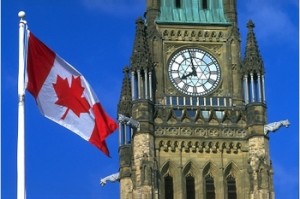Annual Report To Parliament On Immigration 2013
The Canadian federal government has established the objective of streamlining roughly 265,000 immigrants to Canada in 2014. The new target-mark was included in the 2013 Annual Report To Parliament, tabled by Immigration Minister Chris Alexander on Monday, October 28th.
The annual Canadian immigration report also contained information about Canada’s eventual transition to an Expression of Interest (EOI) immigration model in 2015. In this regard, the report helps clarify what is to be expected in the upcoming year.
In the last 7 years, more than 1.8 million foreign nationals have gained Canadian permanent residency – with the majority going on to eventually claim Canadian citizenship.
The Annual Report To Parliament on Canadian immigration cites China as the top source-country for Canadian immigrants in 2012. The Philippines and India followed closely behind, with the United States and France leading Western nations in immigration to Canada. Canadian Citizenship and Immigration Minister Alexander says the figures are a reflection of Asia’s significant population.
“We don’t target any one region or any group of countries,” said Alexander. “We target the best and the brightest.” The Minister went on to add “Canada is in a global competition for the best and brightest immigrants, and this plan is crafted with attracting the people we need for Canada to succeed.”
Roughly 1/3 of Canada’s 2014 immigration target is dedicated to applications relating to family reunification, or refugee class applications. Economic class immigrants will comprise the rest of the 2014 Canadian immigration target.
“The 63% economic immigration for 2014 is slightly higher than we’ve had before,” said Alexander. “We want to get higher still.”
The Canadian Minister of Citizenship and Immigration made clear that the increased targeting of economic-class immigrants will not affect Canada’s commitment to those applying for Canadian permanent residency based on humanitarian considerations.
Canada aims to attract skilled workers who stand an excellent chance of becoming economically established in Canada, by integrating into the Canadian labour market and Canadian society in general. Economic classes of Canadian immigration enable qualified candidates to obtain Canadian permanent residency through a myriad of programs, based on their professional experience. Economic programs that facilitate the streamlining of such economic class applicants include: Federal Skilled Trades Program, Federal Skilled Worker Program, Business Immigration Programs, Canadian Experience Class, and the Provincial Nominee Program.
Finally, Minister Alexander also stated that Canada’s notorious backlogs are being reduced and processes are normalizing, after significant delays due to the visa officer’s strike that persisted in 2013.
Contact us for assistance with any Canadian immigration matter, including work permit and labour law guidance.

